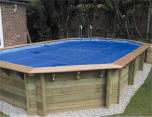Children’s swimming pools Swimming lessons for babies
|
residential swimming lessons, private swimming lessons

Children’s swimming pools Swimming lessons for babies
|
Swimming Pool Safety for Children Endless Pools

Luxury Pools
Drowning prevention tips for swimming pool owners
Never leave a child/children unattended in the water or pool area for any reason. Don’t be distracted by doorbells phone calls chores or conversations. If you must leave the pool area take the child/children with you making sure the pool gate latches securely when it closes.
Always keep your eyes on the child or children. Designate a child watcher whether you or someone else when you attend a party or have friends or family over.
Talk with baby-sitters about pool safety supervision and drowning prevention.
Post rules such as “No running ” “No pushing ” “No dunking” and “Never swim alone.” Enforce the rules for children of any age.
Don’t rely on swimming lessons or “floaties” to protect your children in the water.
Don’t assume that drowning or a drowning incident couldn’t happen to you or your family.
Don’t have a false sense of security just because you think your pool area and home are secure. Always watch your children whether in the house or outside.
Attend a CPR class. Make sure your baby-sitter knows CPR.
For the nearest cardiopulmonary resuscitation class contact your fire department Red Cross or hospital.
Encourage your neighbors to follow pool safety guidelines including keeping their back gates and doors locked and their pool gates securely closed and latched.
For a printable brochure on “Water Safety ” Click
![]()
Childrens Parties-Soft Play